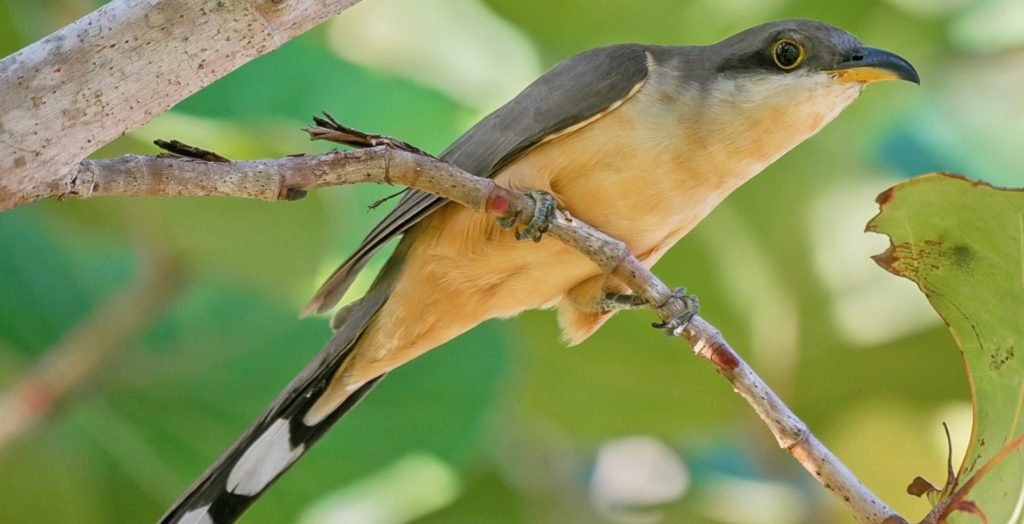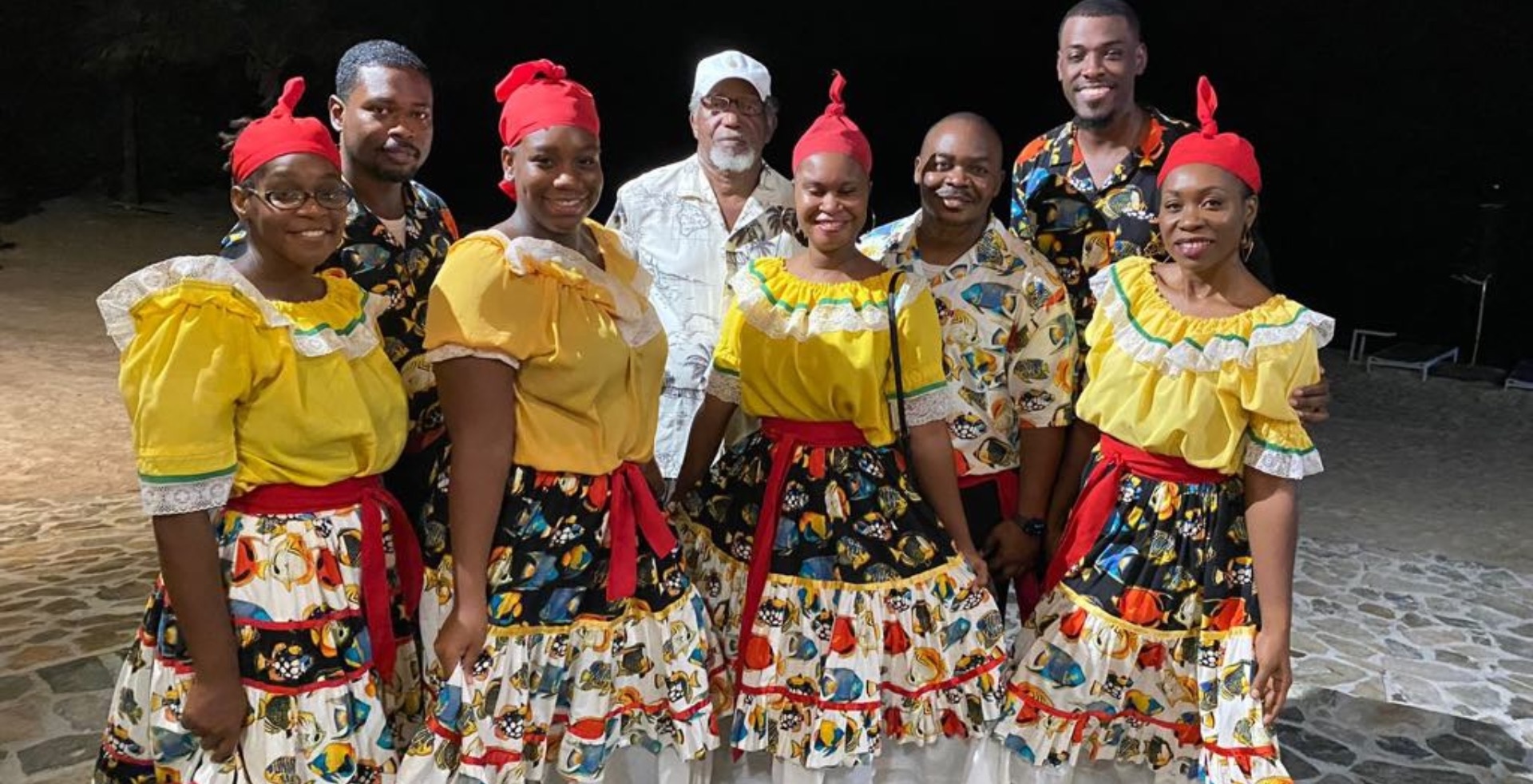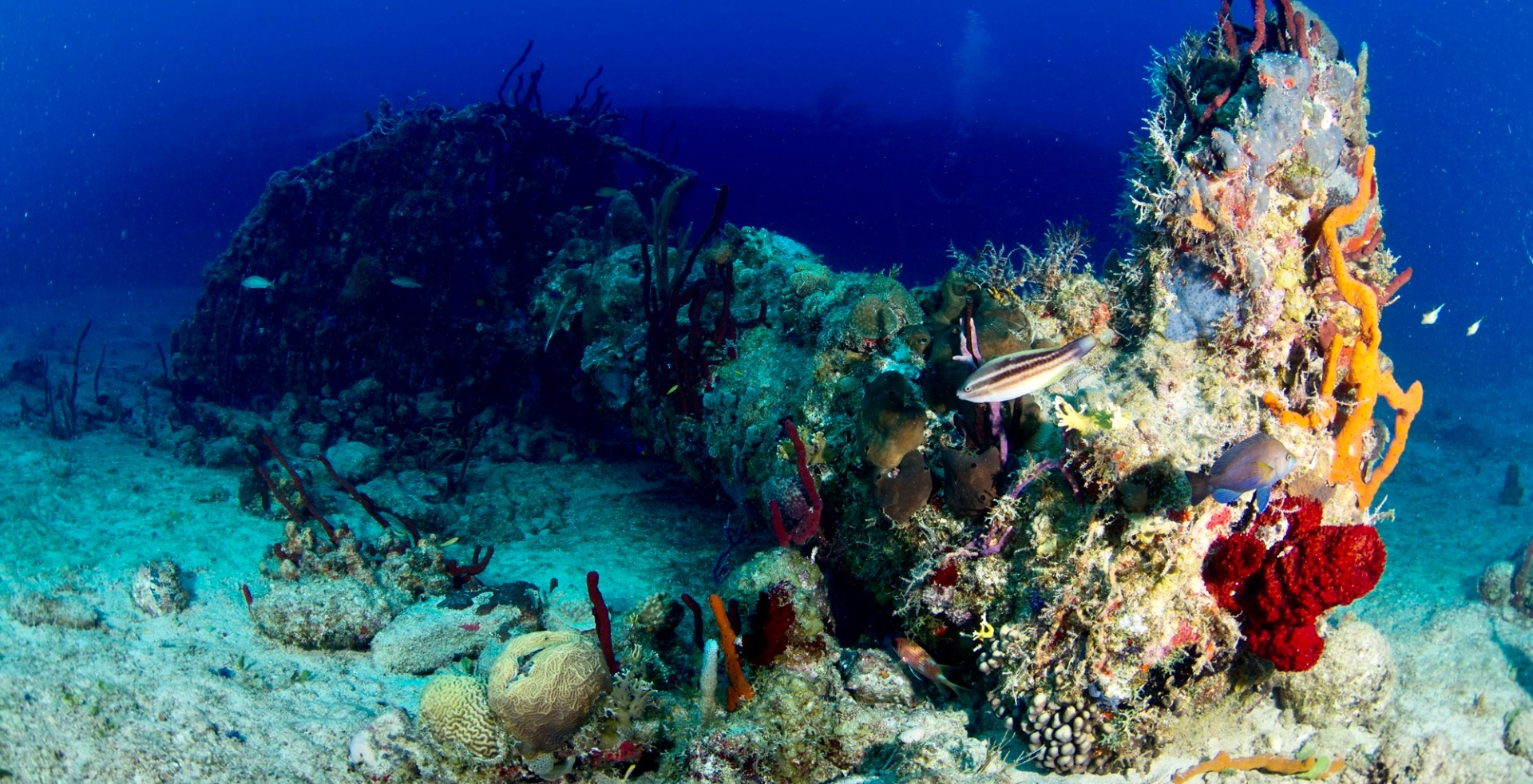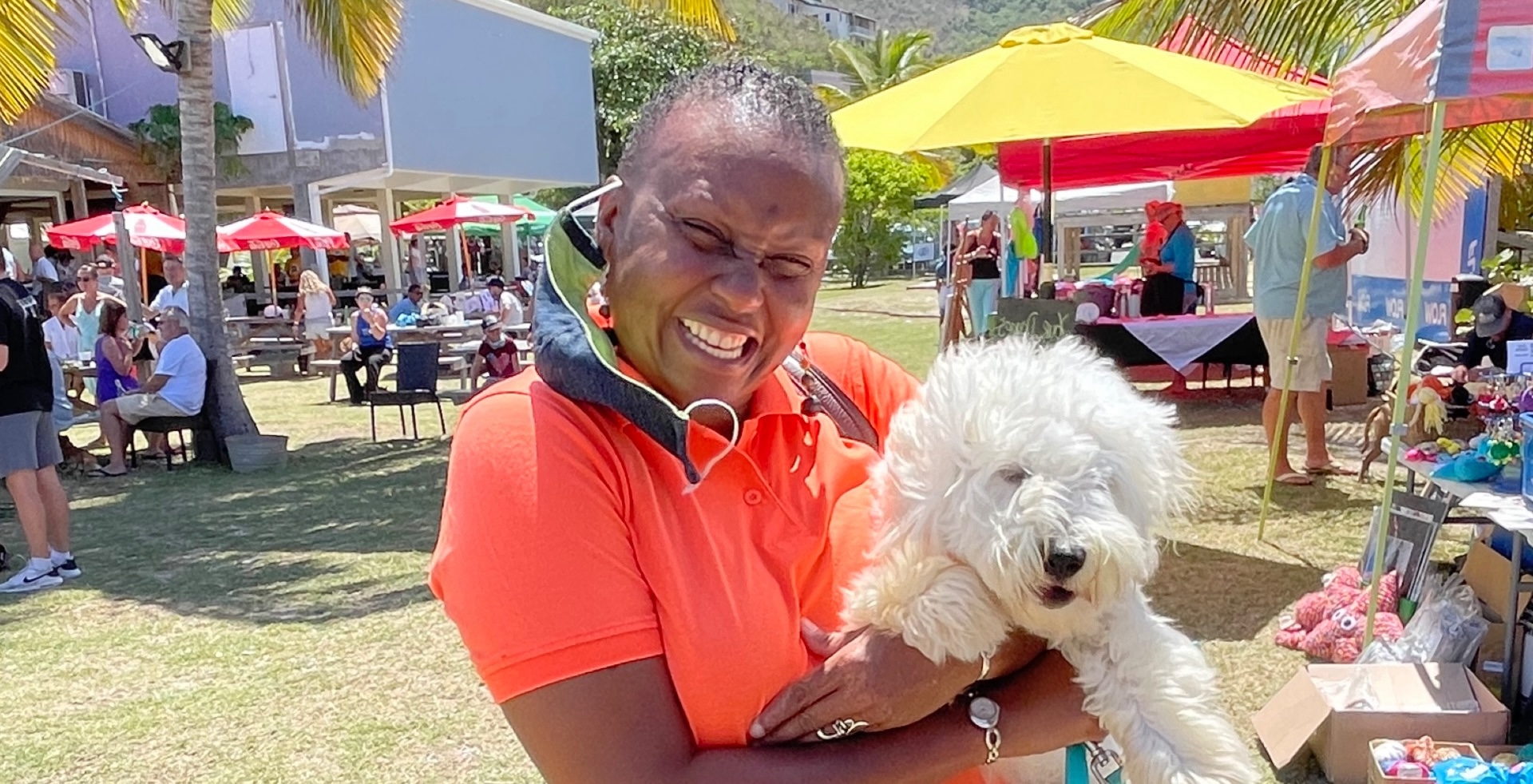The Cuckoo Who Came to Stay

I hear them in the garden. “Gaw gaw gaw gawww.” Distinct and guttural, it is the call of the mangrove cuckoo, one of the B.V.I.’s most elusive and well-camouflaged birds.
As its name implies, the mangrove cuckoo primarily frequents mangroves, which are found in low-lying coastal areas. But, not exclusively. I live on top of a hill, 400 feet above sea level, and I have several mangrove cuckoos feeling quite at home in the gnarly branched and densely leaved ficus trees that surround my house. Every so often I catch a glimpse of a cuckoo and its mate, darting up and down ficus branches in a frisky, almost playful manner, leading me to believe that they are courting. But maybe that’s just the romantic in me.
Still, it’s only a glimpse. Unlike gregarious kingbirds, which will perch on telephone wires, or the audacious pearly-eyed thrasher, which will swoop onto an outdoor table and steal food off a plate, the mangrove cuckoo generally keeps to itself.
That’s why it was such a surprise the other day when one flew into my house. I wouldn’t even have known it except for the thudding sound as it flew into the closed window at the end of the living room, most likely heading for the ficus tree it spied outside. I was devastated. It seemed to be unconscious and I hated to think that my only close up sighting of this beautiful bird would be as it took its last breath. My husband, Alan, who has a wonderful way with animals, picked the bird up, stroked its head and carried it outside onto our balcony. After a few moments, the bird lifted its head and suddenly perched onto his fingers. Miraculously it was alive.
I was struck by how handsome our new friend was – one of the prettiest land birds in the British Virgin Islands. The mangrove cuckoo (coccyzus minor) is a member of the cuckoo family Cuculidae, of which there are dozens of species. For the most part, cuckoos are arboreal birds, although there are a few exceptions that lay their eggs in nests on the ground or in low shrubs. Cuckoos as a family are found in both the Old and New Worlds, but the mangrove cuckoo is a subtropical bird found only in Central America, the southern United States (especially Florida) and here in the West Indies.
A slim, long-tailed bird about 30 cm in length, the mangrove cuckoo is distinguished from other cuckoos by its black ear patch and a buff coloured belly. The upper bill (or mandible) is black and the lower mandible is yellow with a dark tip. The head and upper parts are brown and there is a yellow ring around the eye. Both male and female mangrove cuckoos are similar, and have six large white spots in lengthwise pairs on their black tail feathers. Their dining tastes run to hairy caterpillars, moths, spiders, fruits and berries. Mangrove cuckoos make their nests above ground in hardwood trees or securely within the branches of a mangrove. They breed between May and late July or early August and unlike many birds, breeding pairs are monogamous.
The mangrove cuckoo is as proficient at camouflage as a polar bear in a snowstorm. I sometimes hear one calling from the trees, but trying to spot it is nearly impossible. Even bird experts find this secretive creature difficult to study. Last year an ornithologist from Texas gave a lecture on mangrove cuckoos at the islands’ community college, and he too, found them difficult to spot. And he knows what he is looking for. That’s why I was so delighted to discover how personable and relaxed the little bird was up close. He sat calmly on Alan’s hand for at least 30 minutes, and we began to wonder if he would ever leave. But eventually he shook his feathers, stretched out his wings and flew into that ficus tree that he had spotted at the beginning of his adventure. Perhaps he had spied a hairy caterpillar, or some other delicacy. Our new friend had flown back into his secret world, and as hard as I look, I haven’t seen him since.
The Mangrove Cuckoo is just one of many enchanting birds that call the BVI home. For more about BVI birds read Discovering Some Cool BVI Birds at https://thebviinsider.com/the-great-bvi-bird-count-discovering-some-cool-birds/
To learn about the BVI’s several island bird sanctuaries go to https://bvinpt.org
- Claudia Colli






